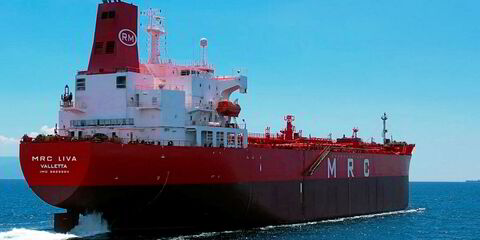Ardmore Shipping signed a sale-and-leaseback deal for its oldest vessel to raise a “small but meaningful” amount to debt, its chief executive says.
New York-listed Ardmore said in its quarterly report that the transaction involving the 47,000-dwt Ardmore Seatrader (built 2002) had generated $9.3m in working capital.
Anthony Gurnee explains the ship is the third Ardmore vessel involved in a sale-and-leaseback after the 17,600-dwt IMO2 Ardmore Calypso and Ardmore Capella (both built 2010), which have since been sold.
“We think of leasing as an opportunity to raise small but meaningful amounts of mezzanine debt for general corporate purposes,” Gurnee told TradeWinds.
“Mezzanine debt sits between equity and senior secured debt, and as such it should be less expensive than equity but ideally as close as possible to the cost of senior debt.
“In this case we did the transaction opportunistically on the back of a long-standing relationship and consider it a good deal for both sides.”
While the finer details of the Ardmore Seatrader deal have not been disclosed, it emerged on the owner's conference call this week that the leaseback is for five years.
Ardmore reported a $3.7m loss for the final three months of 2016, compared with a profit of $5.4m in the same stretch a year ago. Its loss per share of $0.11 measured up with consensus projections.
Significant rebound ahead
Gurnee told investors and analysts on a conference call that scrapping and slowing newbuilding deliveries bode well for the product tanker market.
“The orderbook now stands at 4.7% of the existing fleet, its lowest level in at least 20 years,” he said.
“In the meantime, scrapping is continuing at a rate of 20 to 25 ships a year or about two per month, so net fleet growth is now down to three or four units per month,” Gurnee added.
With turmoil in the shipbuilding industry leaving very few yards able to take orders at today's prices and limited appetite for booking new vessels, Gurnee is hopeful for an improving market.
“The combined impact of strong demand fundamentals and diminishing supply growth will result in a further tightening of the supply demand balance which in turn should lead to significant rebound in charter rates at some point,” he said.
“The big question is when and whether the oversupply of larger product tankers will push that recovery out some.”



